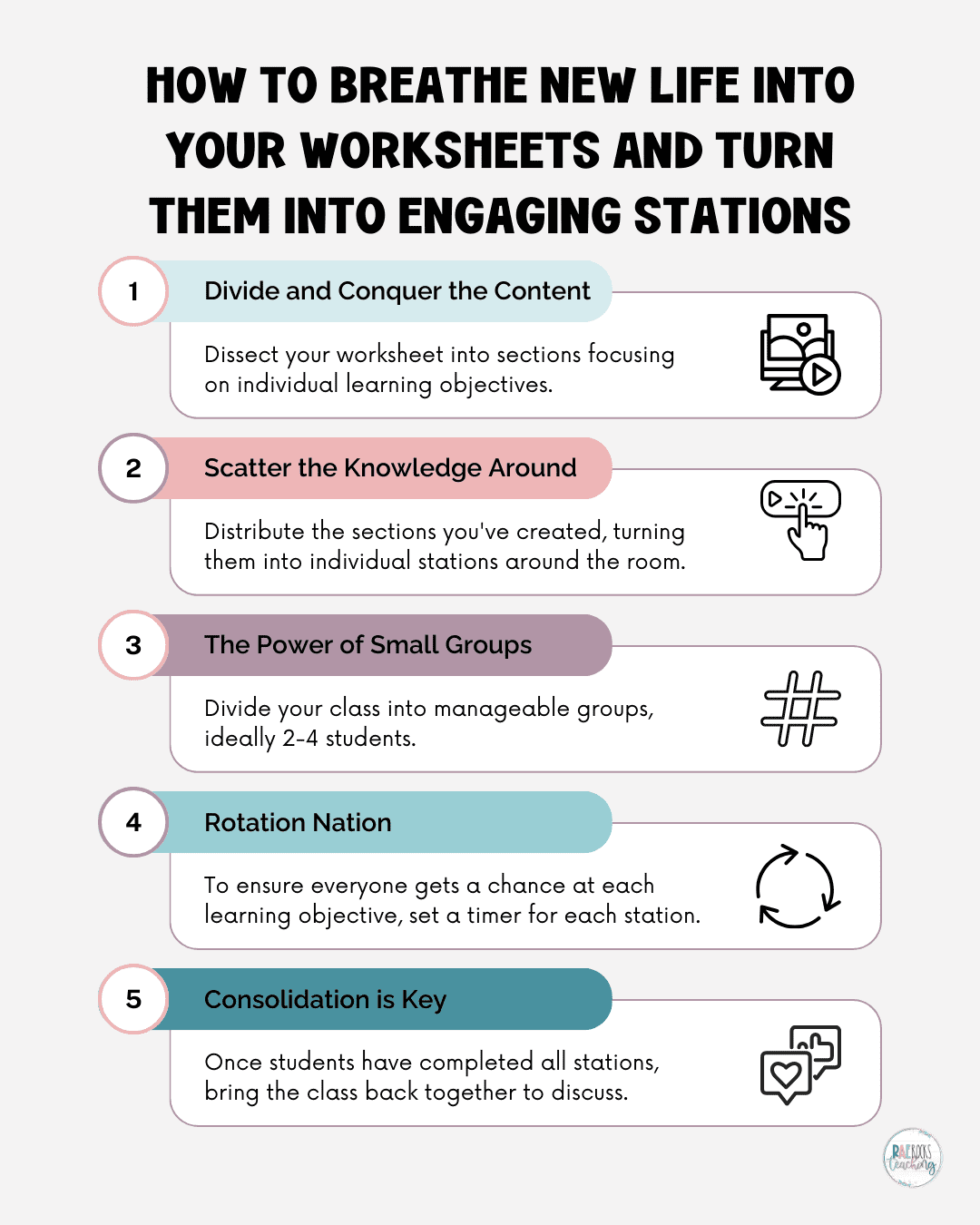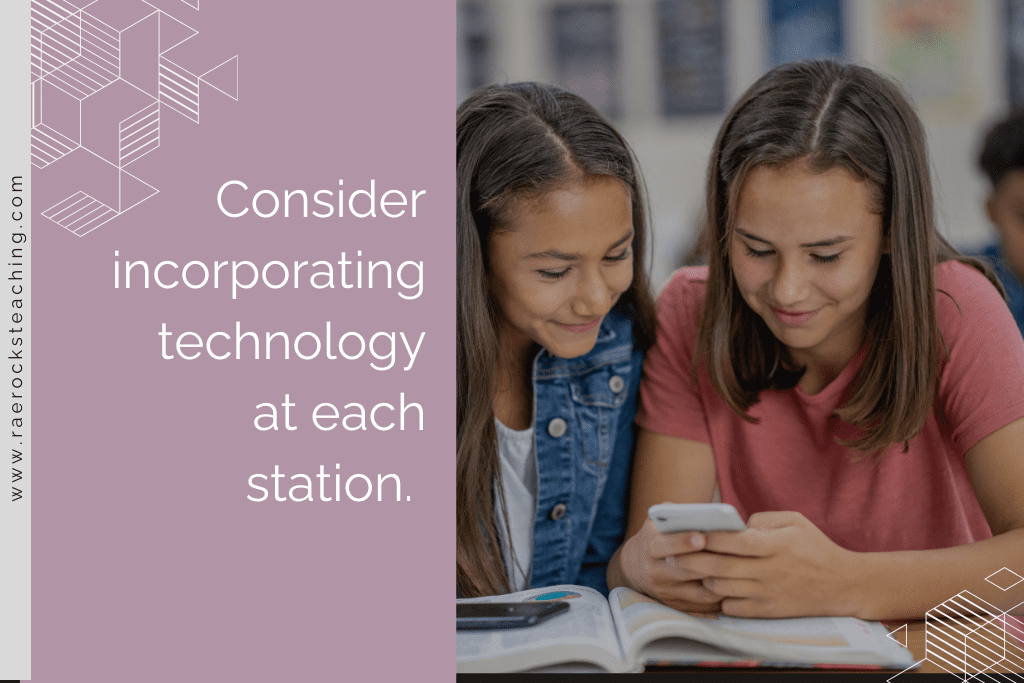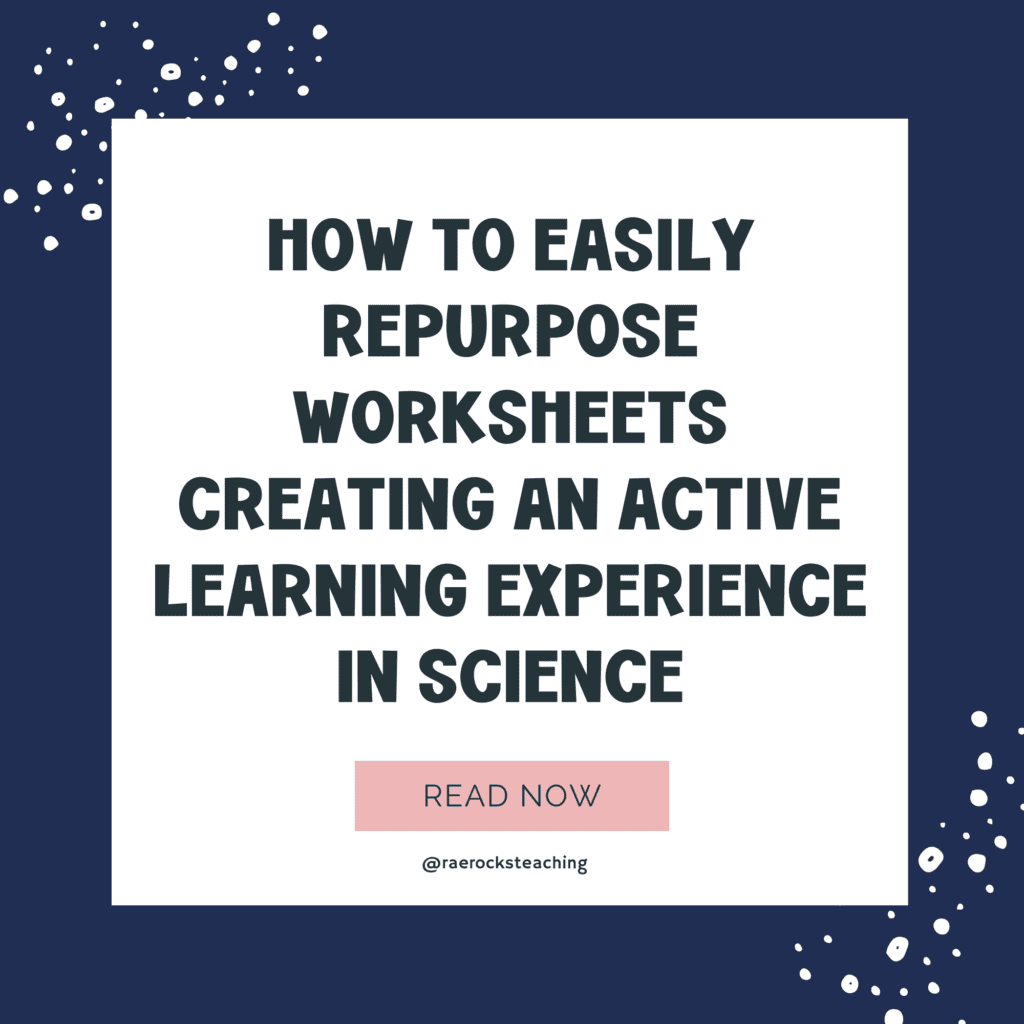As high school biology and anatomy teachers, we all strive to create an active learning experience with engaging lessons that solidify understanding in our students. Worksheets, while a staple resource, can often fall flat, leading to a classroom filled with quiet rows of students passively filling in the blanks. But what if we could transform those same worksheets into a dynamic learning experience that fosters active participation, collaboration, and deeper comprehension? Enter the power of stations in the classroom!
Looking for different ways to engage your Biology students? Then grab your FREE COPY of the ULTIMATE ENGAGEMENT GUIDE!
The Struggle is Real: Why Worksheets Need a Reboot
Let’s be honest, traditional worksheets can be a recipe for classroom snooze-fests. Students can become disengaged, simply copying information without truly processing it. This passive learning approach doesn’t translate well to the complexities of biology and anatomy, where understanding often hinges on connections, applications, and critical thinking.

-
Save
Active Learning: The Key to Unlocking Deeper Understanding
The good news is there’s a solution! By incorporating active learning strategies, we can transform our classrooms from lecture halls into dynamic learning environments. Active learning goes beyond simply absorbing information. It requires students to engage with the material in a meaningful way, allowing them to analyze, interpret, discuss, and apply their knowledge. Stations in the classroom are an excellent tool to create this active learning experience.
Worksheets into Stations: A Recipe for Engagement
Here’s how to breathe new life into your worksheets and turn them into engaging stations:
- Divide and Conquer the Content: The first step is to strategically dissect your worksheet. Instead of presenting a long list of questions or tasks, focus on individual learning objectives. Each section of the transformed worksheet should address a specific concept or question, allowing students to concentrate on mastering a smaller piece of the puzzle before moving on.
- Scatter the Knowledge Around: Gone are the days of worksheets confined to a single desk. Take advantage of your classroom space! Distribute the sections you’ve created, turning them into individual stations. Hang them on walls, place them on desks, or even consider using portable whiteboards or easels for a more flexible setup.
- The Power of Small Groups: Divide your class into manageable groups, ideally 2-4 students. This collaborative approach fosters peer learning and encourages students to work together to solve problems, explain concepts to each other, and build communication skills essential for success in science.
- Rotation Nation: To keep things dynamic and ensure everyone gets a chance at each learning objective, set a timer for each station. This allows for focused exploration at each location before students rotate to the next one. Consider incorporating a fun element into the rotation, perhaps having students solve a quick riddle or complete a short physical activity before moving on.
- Consolidation is Key: Once students have completed all stations, bring the class back together to share their findings. This can be done through group presentations, class discussions, or a quick quiz to assess understanding. By consolidating the information gleaned from each station, students solidify their learning and gain a deeper understanding of the overall concept.

-
Save
The Benefits of Stations: A Multifaceted Approach
Stations in the classroom offer a multitude of benefits that go beyond simply making learning more engaging:
- Active Learning: Stations move students from passive information receivers to active participants in their learning journey. This hands-on approach promotes deeper understanding and retention of complex biological and anatomical concepts.
- Collaboration: Working in small groups fosters communication, teamwork, and problem-solving skills. Students learn to explain their understanding to others and benefit from diverse perspectives within their group.
- Movement and Engagement: Rotating stations keeps students physically and mentally stimulated, leading to increased focus and improved information retention.
- Differentiation: By incorporating a variety of learning styles at each station (visual aids, reading materials, hands-on activities), stations cater to different learning styles, ensuring everyone has the opportunity to excel.
- Assessment on the Fly: As students rotate and work together, teachers can observe their interactions and grasp their understanding of the material. This allows for real-time adjustments to the lesson plan and provides valuable insights into areas that might require further clarification.
Bonus Tip: Adding a Tech Twist
Want to elevate your stations even further? The digital age offers exciting possibilities! Consider incorporating technology at each station. QR codes linking to short videos, interactive websites, or even simulations can provide additional context and support the information presented in the worksheet sections. This allows students to engage with the material in a multimedia format, catering to different learning preferences.

-
Save
Turning worksheets into stations takes minimal effort yet offers immense benefits. This strategy injects active learning into your classroom, fosters collaboration, and keeps your students engaged.
Don’t forget to snag the 15 Activities for Biology to Increase Engagement FREEBIE!

-
Save
I love sharing helpful content with y’all and would love to connect on IG or Facebook. I’m on TikTok too! Follow me and send me a DM with what you need more of because I’m here to help! If you are looking for even more inspiration, find me on Pinterest!
Share via:








